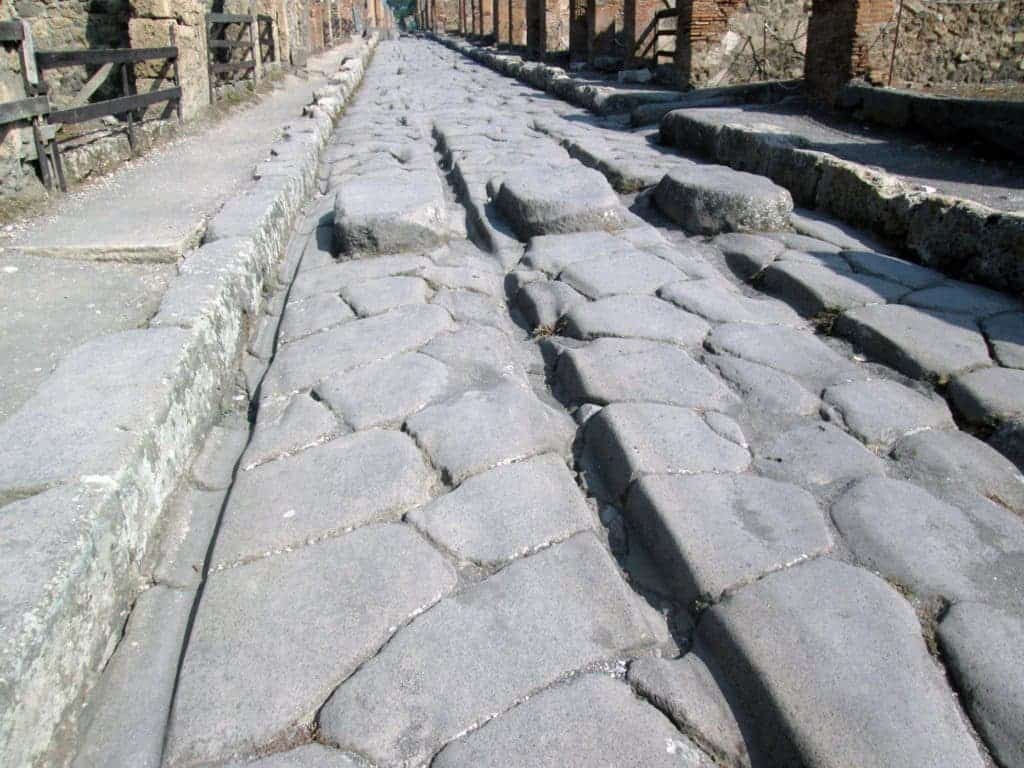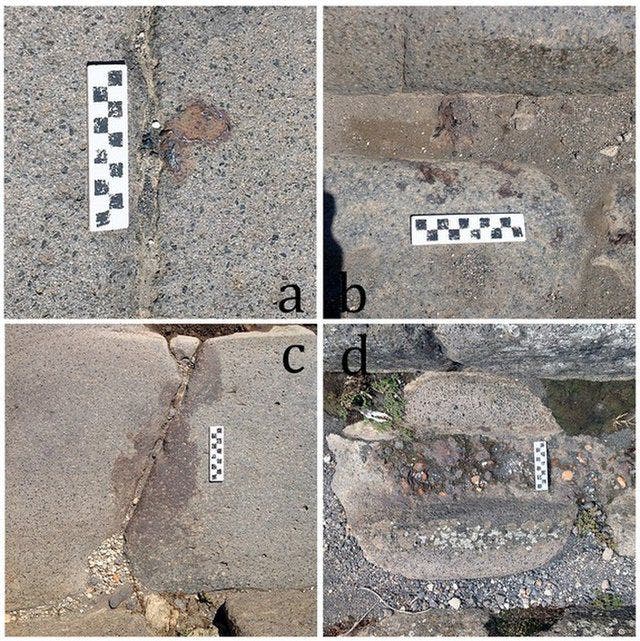
The devastating eruption of Mt. Vesuvius in 79 AD destroyed the city of Pompeii, killing thousands. But the deadly hot ash and lava also helped to preserve the ancient city and the remains of its inhabitants. In a new study, archeologists uncovered a previously unknown method of Roman street repair, which involved pouring molten iron over deep ruts in the road.
Potholes: an ancient problem
For centuries, one of Rome’s greatest advantages over its enemies was its huge and intricate network of stone-paved roads. From the Firth of Forth in Scotland to inland North Africa remains of these iconic landmarks have survived to this day — and in some cases even formed the basis for certain modern roads today.
All Roman roads were built by the Roman military, which employed various specialists for this occasion. According to Paternus, a Roman senator in the 3rd century AD, the first thing that legionaries would do when they were tasked with building a Roman road on behalf of the new governor or the procurator would be to use ‘agrimensores’. These were land surveyors who did all the surveying using measuring equipment to lay out the route of the road. Then, ‘liberators’ or land levelers would level the land that the road was going to be built on, followed by ‘Mensores’, or quantity measurers who would then measure out all the various quantities of the various stages of building the Roman road.
Roman road works were really sophisticated, and their maintenance was no different, as we’ve learned from a new study published in the American Journal of Archaeology. During a 2014 survey of Pompeii’s streets, researchers at the University of Massachusetts Amherst and the University of Texas at Austin were surprised when they consistently found iron between and below paving stones of the city’s most important streets.
“Recent research on the costs of paving stone streets in terms of time, money, and opportunity provides the economic context for this novel repair process and shows the use of iron and iron slag to have been an expedient alternative,” the authors wrote in their study.
Like other major towns, most of Pompeii’s streets were paved with stone. However, the passage of carts on a daily basis eroded the stones, forming deep holes and ruts which are still easily visible to this day. In fact, over a century and a half ago, the American satirist Mark Twain based his complaints about the corruption of city officials at Pompeii on these cavities:
“Have I not seen with my own eyes how for two hundred years at least the pavements were not repaired! – how ruts five and even ten inches deep were worn into the thick flagstones by the chariot-wheels of generations of swindled tax-payers? … I wish I knew the name of the last one that held office in Pompeii so that I could give him a blast. I speak with feeling on this subject, because I caught my foot in one of those ruts, and the sadness that came over me when I saw the first poor skeleton, with ashes and lava sticking to it, was tempered by the reflection that may be that party was the Street Commissioner,” he wrote.
Although the Romans were quite advanced in their public works (and corruption was indeed a problem in Roman society), Twain was perhaps not aware of how complicated road repair during that time could be. Repaving the street was out of the question in most situations — it was simply too expensive and time-consuming. If a narrow street was damaged, traffic could be blocked for months until specialists finished repaving the street.

In Pompeii, at least, the Romans devised a creative solution to their problem. The city’s engineers heated iron to a molten state, then poured the material onto, into, and below the eroded paving stones. Hundreds of individual street repairs were discovered thus far in the city.
The molten iron was poured alongside other filler materials such as stone, grounded terracotta, and ceramics. Once the metal cooled down, the whole mash solidified to completely fill and cover holes. According to the archaeologists, this method was much cheaper and quicker than repaving a street.
It’s not exactly clear how the Romans carried out such repairs, but the researchers have some clues. We know that the iron would have needed to heat to about 1,600ºC (2,912ºF), a temperature which Roman furnaces could accommodate. Iron drops were found on sections of the street that didn’t require repair, suggesting that it was accidentally spilled while being carried, a task likely reserved for slaves.
In the future, the researchers hope to analyze the chemical composition of the iron from the street filings to find its source. They would also like to survey more Pompeii streets.


